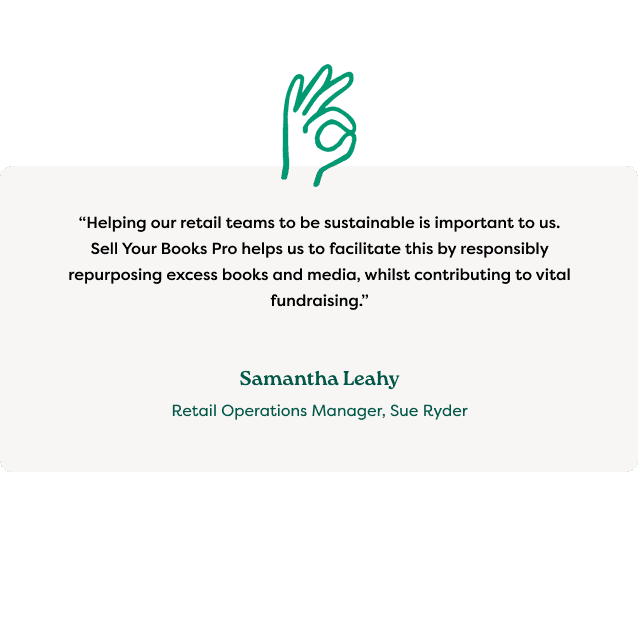
Sell your Books, CDs, DVDs and Computer Games
Clear unsold stock by scanning your second-hand books, CDs, DVDs and Computer Games. Turn your inventory into cash with Sell Your Books Pro (previously Shopiago Trade-in).

World of Books – Sell Your Books Pro, is the quick and easy way to get rid of excess stock and make quick cash from pre-loved books and media. On average, we pay ten times more for an item than what you would earn from a bulk collection service.
You scan your items for a competitive price. We’ll collect your items. You make money and free up space in your stockroom. We pay weekly, with payments made straight into your chosen bank account. Scan, sell, gone.
What’s more, when you sign up, you get access to exclusive promo codes to boost your basket value – which gives you even more revenue. You’ll be invited to participate in our annual awards programme, and to join our regular games and competitions.

Learn and grow together
We provide a robust onboarding programme for all our users. Our customer success team will be in regular contact to help you to get the most out of Sell Your Books Pro. And, if you have any queries, we are always on hand.
World of Books - Sell Your Books Pro
Sell pre-loved books, CDs, DVDs and computer games
Scan the barcode feature
Get an instant competitive price
Access instant reporting
Free collection, which you can book online
Get paid directly into your chosen bank account
Join in with our regular online games and competitions
Watch a quick video about Sell Your Books Pro



Books and media traded for instant cash so far

Books rehomed

Books donated to good causes around the world
Our partners
Here are just some of the organisations who use Sell Your Books Pro to generate more revenue.















